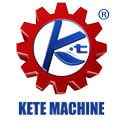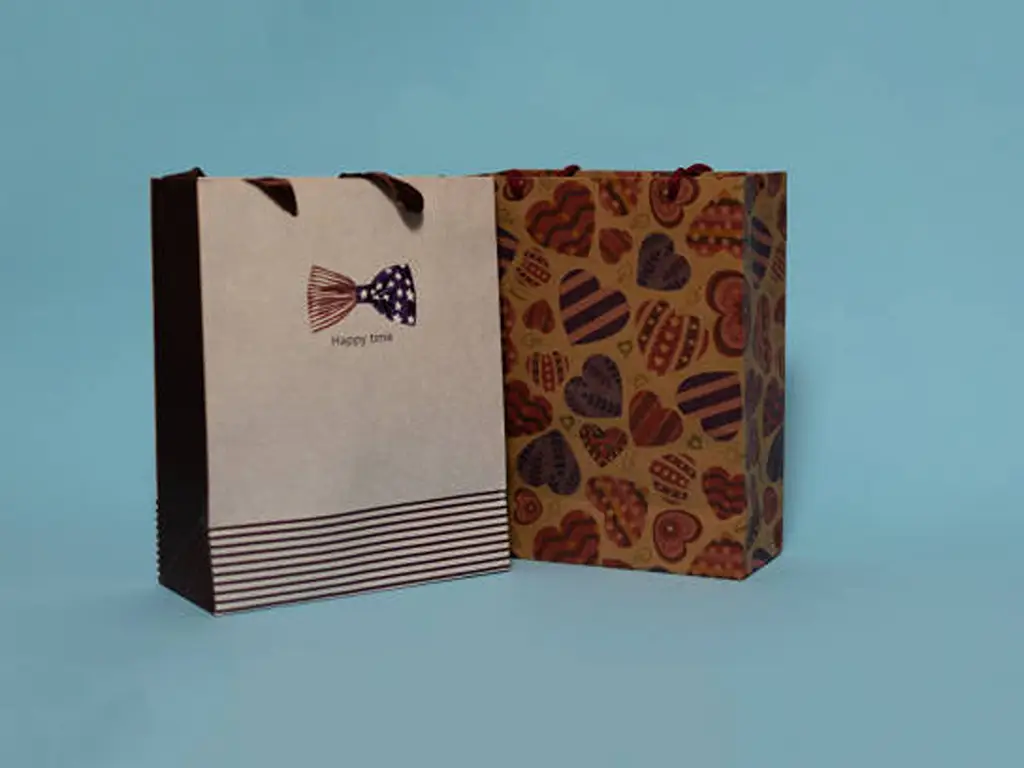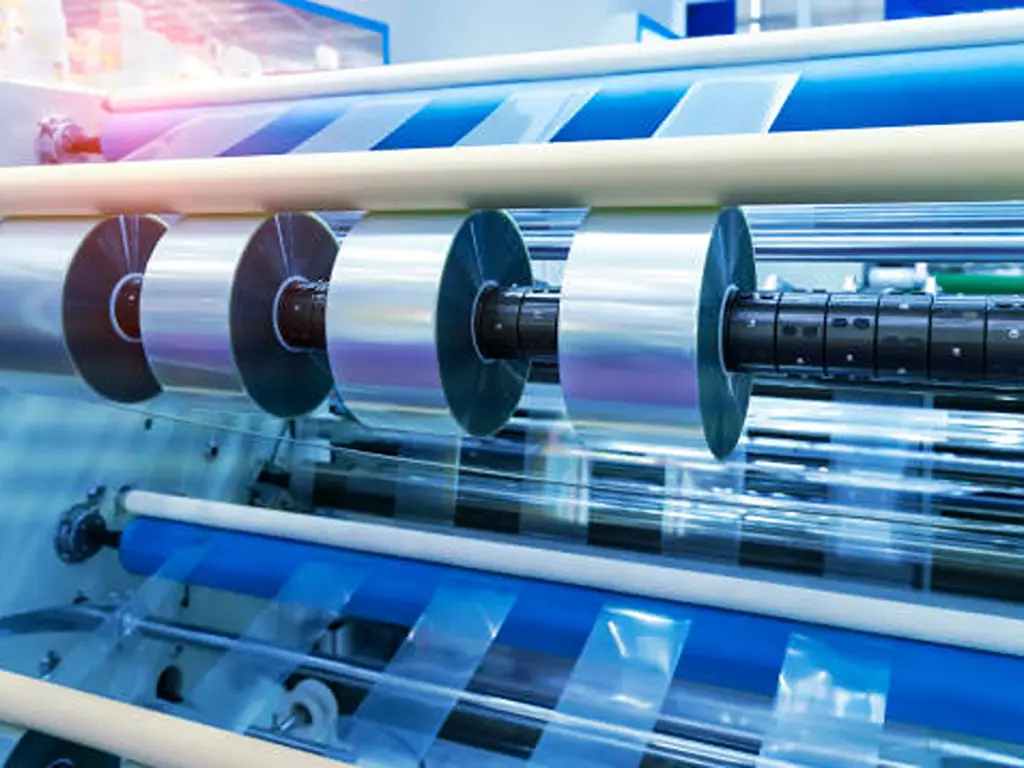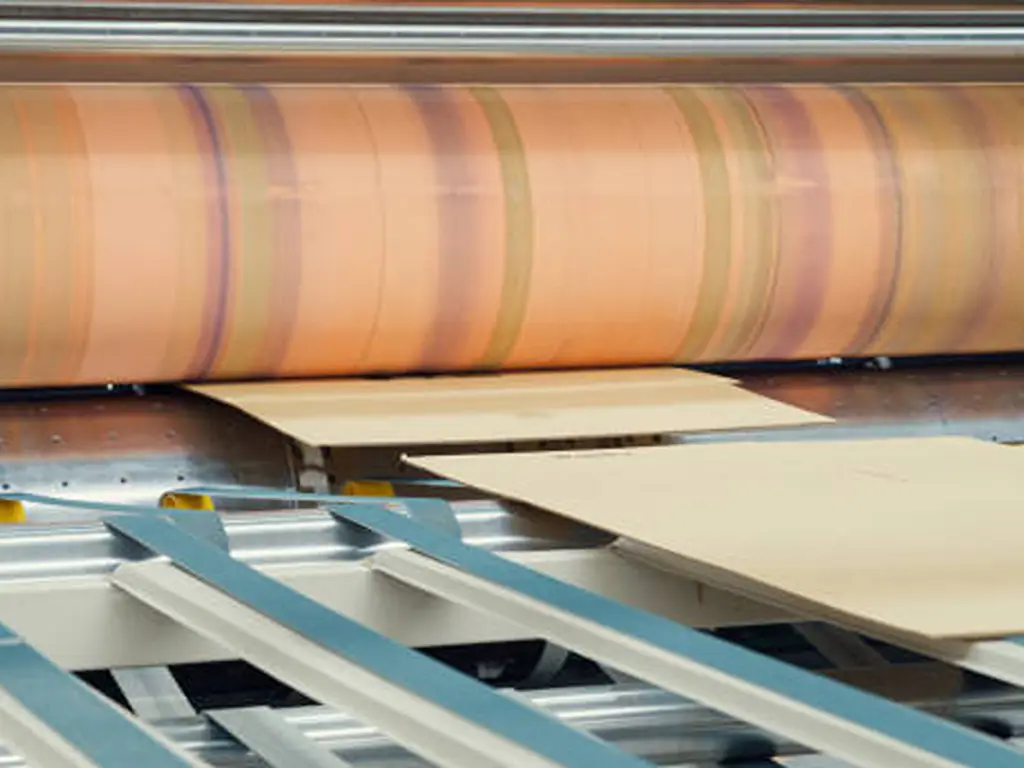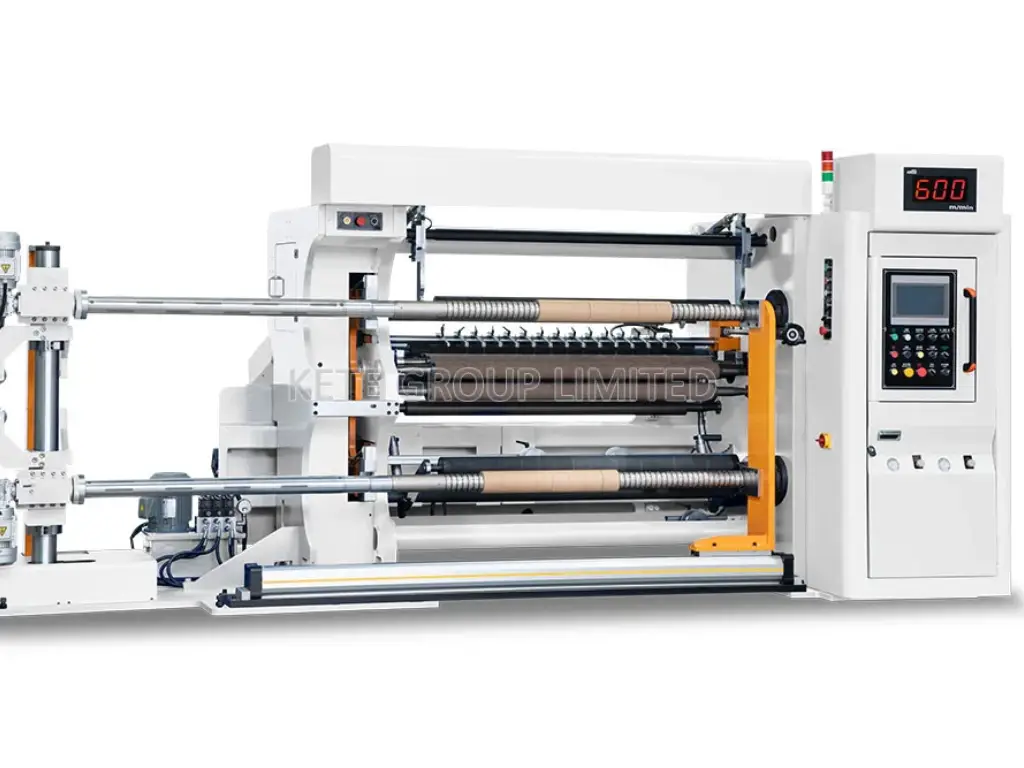소개
When it comes to the world of food business, the price tag on packaging isn’t just about numbers. It’s the heartbeat of a brand’s survival. Product packaging serves as a critical interface between your brand and the consumer. It’s an engineered system designed to protect the product, communicate brand value, and drive purchasing decisions.. It’s a game-changer in your product’s journey, from keeping it fresh to making it irresistible to your audience. But here’s the twist: while packaging can dazzle, the price of packaging can also stack up, nudging your unit price. So, what’s the real cost of that handshake? Dive into this guide, and let’s unravel that mystery together. As manufacturers of the machinery that powers the packaging industry, we at KETE offer a unique behind-the-scenes look at what truly drives the final packaging price you pay.

위대한 식품 포장 대결
식품 포장의 오디세이를 시작하시나요? 각 선택에는 고유한 재정적 음모가 숨어 있으므로 마음의 준비를 하세요.
플라스틱 용기: 포장업계의 경량 챔피언. 예산 친화적인 경우가 많으며 배송비 절감에 도움이 될 수 있습니다. 그러나 더 무거운 품목에서는 흔들릴 수 있으며 솔직히 말해서 어머니 지구는 그들의 가장 큰 팬이 아닙니다.
골판지 상자: 다재다능한 영웅들. 주머니 사정이 넉넉한 편이고 디지털 인쇄로 멋을 낼 수 있지만, 가격도 만만치 않습니다. 깃털처럼 가벼워 배송이 간편하지만, 음식의 신선도를 지키는 수호신은 아닐 수도 있습니다.
유리병: 우아한 귀족들. 고급스러운 분위기를 풍기며 음식의 신선도를 유지해줍니다. 하지만 그 우아함에는 대가가 따르는데, 특히 배송비를 고려하면 더욱 그렇습니다. 무게가 무겁고 다소 섬세합니다.
다양한 유형의 패키징 선택은 스토리의 한 장과 같아서 제품의 스토리뿐만 아니라 주머니 사정에까지 영향을 미칩니다. 원자재 이야기부터 공급망의 서사시, 배송의 마지막 커튼콜까지, 포장 선택은 예산 연극의 감독과도 같습니다.
To give you a clearer financial picture, here’s a quick-reference table comparing common packaging types with their estimated unit cost ranges. These prices typically reflect a standard order quantity of around 5,000 units.
| 재료 유형 | Common Use Examples | 장점 | 단점 | Est. Unit Cost Range |
| Corrugated Cardboard | Shipping Boxes, Mailer Boxes | Durable, protective, recyclable | Bulky, basic appearance unless printed | $0.50 – $3.00 |
| Folding 카톤 | Cereal Boxes, Product Boxes | Lightweight, highly printable | Less protective than corrugated | $0.30 – $2.00 |
| Rigid Box (Paperboard) | Luxury Goods, Gift Sets | Premium feel, extremely durable | Expensive, bulky to ship | $2.50 – $10.00+ |
| Flexible Pouch | Snacks, Coffee, Liquids | Lightweight, excellent barrier properties | Can feel less premium | $0.20 – $1.50 |
| Glass Jar/Bottle | Sauces, Beverages, Preserves | Premium, inert, recyclable | Heavy, fragile, high shipping cost | $0.60 – $2.50 |
| Plastic Container (PET, PP) | Takeout, Salads, Berries | Lightweight, versatile, cheap | Negative environmental perception | $0.20 – $1.00 |
관련 게시물: 식품 포장의 유형: 선도적인 업계 공급업체가 알아야 할 사항
패키징 비용에 영향을 미치는 요인
포장 비용의 수수께끼를 푸는 것은 직소 퍼즐을 맞추는 것과 같습니다. 각 구성 요소는 각자의 역할을 하며, 각 조각을 이해하면 더 큰 그림을 볼 수 있습니다.
유기농 재료와 비 유기농 재료의 포장 비용은 얼마입니까?
포장재에 관해서는 항상 유기농과 비유기농에 대한 논란이 있습니다. 하지만 그것이 여러분의 지갑에 어떤 의미가 있을까요?
| 장점 | 단점 | |
| 유기 재료 | 친환경적이고 생분해되는 경우가 많으며 지속 가능한 제품에 프리미엄을 지불할 의향이 있는 틈새 시장에 어필할 수 있습니다. | 가격이 더 비쌀 수 있습니다. 유기농 면 가방이든 대나무로 만든 포장재든 원자재 비용이 더 높은 경우가 많습니다. |
| 비유기 재료 | 일반적으로 더 저렴합니다. 플라스틱, 특정 판지 및 기타 비유기 재료는 비용 효율성 때문에 수년 동안 업계 표준으로 사용되어 왔습니다. | 환경을 생각하는 소비자들의 공감을 얻지 못할 수도 있습니다. 또한 지속 가능성에 대한 규제가 강화되면서 비 유기농 소재에만 의존하는 것은 장기적으로 위험한 전략이 될 수 있습니다. |
그렇다면 유기농은 항상 더 비쌀까요? 꼭 그렇지는 않습니다. 초기 비용은 더 높을 수 있지만, 친환경 제품에 더 많은 비용을 지불할 의향이 있는 시장을 공략할 수 있는 잠재력이 있다면 균형을 맞출 수 있습니다. 반대로 비유기농 소재는 더 저렴하지만, 특히 지속 가능성을 중시하는 시대에는 그 자체로 여러 가지 도전 과제를 안고 있습니다.
친환경 포장이 더 비싸나요?
오래된 질문입니다: 친환경을 실천하면 더 많은 비용이 들까? 생분해성 소재와 지속 가능한 생산 공정을 갖춘 친환경 패키징은 미래처럼 보입니다. 하지만 비용이 더 많이 들까요?
Initial Costs: Yes, materials like biodegradable plastics or recycled paperboard can come with a higher price tag initially. Custom printing on these materials? That’s another added cost.
Long-Term Benefits: However, there’s a silver lining. Brands that adopt eco-friendly packaging can market their products as sustainable, potentially attracting a larger customer base. Over time, this can lead to increased sales, offsetting the initial investment in eco-friendly packaging.
Regulations and Tax Benefits: Some regions offer tax incentives for companies that adopt sustainable practices. Plus, with stricter regulations around packaging waste, investing in eco-friendly packaging now might save you from hefty fines in the future.
In essence, while the initial packaging expenses of eco-friendly packaging might be higher, the long-term benefits, both in terms of brand image and potential financial incentives, can make it a worthwhile investment.
대량 대 부티크 딜레마
대량 구매의 장점과 필요한 만큼만 구매하는 것의 장점을 놓고 고민한 적이 있나요? 포장 비용도 비슷한 고민을 안겨줍니다. 언뜻 보기에 대량 주문은 단가가 낮고 규모의 경제를 기대할 수 있어 매력적으로 보입니다. 하지만 할인 중이라는 이유로 1년치 고급 커피를 사재기하는 것과 같이 초기 투자 비용이 많이 들 수 있습니다. 이 모든 것을 저장할 수 있는 용량이 있나요?
반대로 소량 주문은 장인이 만든 초콜릿 바 하나를 맛보는 것과 같습니다. 품목당 비용은 더 높을 수 있지만 재정적 부담은 관리할 수 있습니다. 또한 시장 변화에 적응하고 디자인을 개선하거나 전략을 전환할 수 있는 민첩성을 제공합니다.
핵심은? 균형을 맞추는 것입니다. 예산 제약, 스토리지 고려 사항, 시장 역학 관계를 조화롭게 조정하는 것입니다. 대량 주문의 매력은 강력하지만, 때로는 소량 주문의 민첩성이 귀중한 전략적 이점을 제공합니다.
This entire dilemma revolves around a core manufacturing principle: economies of scale. The reason bulk orders have a lower unit cost is because of significant one-time setup fees. For any custom packaging run, a supplier has to create custom printing plates and a cutting die (a tool that cuts the box shape). These fixed costs can range from $200 to over $1,000.
On a small order of 500 units, that $500 setup fee adds $1.00 to each box.
On a large order of 10,000 units, the same fee adds only $0.05 to each box.
Understanding this helps you see why your order quantity is the single most powerful lever you have for influencing your unit price.

그래픽 및 구조물 인쇄의 예술과 과학
미학의 매력
쇼핑 목록에 없던 제품인데도 진열대에 끌리듯 끌려간 적이 있나요? 이것이 바로 완벽한 포장의 힘입니다. 눈부신 색상, 매혹적인 폰트, 매혹적인 포장 디자인은 소비자의 마음을 사로잡기 위해 세심하게 큐레이션됩니다. 하지만 이러한 매력에는 가격표가 따라붙습니다.
High-quality graphic reproduction is a function of precise machinery and material science. The final cost is a direct result of the manufacturing processes required. Every shade, every line, and every intricate detail is pivotal. Premium graphic printing ensures the vibrancy of colors, the clarity of text, and the precision of images. But achieving this artistry demands advanced digital printing technologies and specialized inks. Think of it as commissioning a bespoke artwork; the personalized touch is unparalleled but comes at higher printing costs.
시각적 경험 그 이상: 촉각적 경험
그리고 포장의 구조적 측면도 있습니다. 패키지가 시각적으로 시선을 사로잡는 것과 촉각적인 즐거움을 제공하는 것은 완전히 다른 문제입니다. 질감이 느껴지는 패턴, 혁신적인 주름, 독특한 입구는 개봉 경험을 향상시킵니다. 하지만 이러한 촉각적 요소를 제작하는 것은 매우 까다로운 작업입니다. 특수 기계와 기술이 필요하기 때문에 당연히 비용이 추가됩니다.
본질적으로 정교한 그래픽과 혁신적인 구조의 매력은 매력적이지만, 관련 비용과 비교하는 것이 중요합니다. 광고 분야에서는 지속적인 인상을 남기는 것과 지속 가능한 수익성을 보장하는 것 사이에서 균형을 잡아야 합니다.
A Practical Breakdown: In technical terms, the cost of “visuals” depends on:
Printing Method: Digital printing is ideal for short runs (under 1,000 pieces) as it has no plate setup fees. For larger jobs, Offset and Flexo printing offer a far superior per-unit cost.
Finishes: Each special finish—such as foil stamping or embossing—represents a separate pass through a specialized machine. This adds process time, labor, and tooling costs for each unit.
Insider Tip: The “specialized machinery” that creates these tactile experiences is key. A supplier’s cost for complex structures is directly tied to the precision and automation of their die-cutting and folder-gluer machines. Modern, efficient equipment (like the solutions KETE provides) minimizes waste and manual labor, making sophisticated designs more accessible and affordable for you.
식품 포장의 품질 관리 및 테스트의 숨겨진 비용
식품 포장의 품질 관리는 마치 큰 여행을 떠나기 전에 모든 것을 다시 한 번 확인하는 꼼꼼한 친구와 비슷합니다. 성가신 일인가요? 그럴 수도 있습니다. 꼭 필요한 일인가요? 절대적으로 필요합니다. 포장이 모든 품질 및 안전 기준을 충족하는지 확인하는 것이 가장 중요합니다. 하지만 이러한 철저함은 매우 중요하지만 당장 눈에 보이지 않을 수 있는 비용이 수반됩니다.
제품을 출시했는데 포장 결함으로 인해 리콜한다고 상상해 보세요. 악몽 같죠? 바로 이때 품질 관리가 수호천사처럼 모든 패키지가 기준에 부합하는지 확인하는 역할을 합니다. 하지만 이러한 경계에는 다양한 단계의 엄격한 검사, 전문 장비, 예리한 눈을 가진 팀이 필요합니다. 그리고 시간은 곧 돈입니다. 품질 관리 프로세스가 길어질수록 인건비도 높아집니다.
그런 다음 테스트 단계가 있습니다. 큰 공연을 앞두고 드레스 리허설을 하는 것과 같습니다. 모든 포장 솔루션은 시장에 출시되기 전에 일련의 테스트를 거칩니다. 내구성 테스트, 안전성 테스트, 스트레스 테스트 등 다양한 테스트를 거칩니다. 이러한 테스트를 통해 배송 중 거친 취급부터 다양한 온도에 대한 노출까지 포장재가 실제 상황을 견딜 수 있는지 확인합니다. 그러나 이러한 테스트 시나리오를 설정하고 때로는 반복하는 것은 리소스를 낭비할 수 있습니다.
결국 품질 관리와 테스트는 백그라운드 프로세스처럼 보일 수 있지만, 비용 측면에서는 가장 중요한 부분입니다. 이는 재정적 부담을 크게 줄이면서 최고의 품질을 보장하는 균형 잡힌 작업입니다.
자동화 및 수작업이 가격에 미치는 영향
인간 대 기계라는 오래된 논쟁이 있습니다. 포장 분야에서는 이 논쟁이 완전히 새로운 차원으로 전개되고 있습니다. 기계의 정밀함을 더 선호하시나요, 아니면 사람의 손길을 더 선호하시나요? 이는 마치 수제 에스프레소와 자동 커피 머신에서 추출한 에스프레소 중 하나를 선택하는 것과 비슷합니다. 두 가지 모두 장점이 있지만 가격도 천차만별입니다.
윙윙거리는 기어와 깜빡이는 불빛으로 자동화는 효율성을 약속합니다. 기계는 지치지 않고 쉬지 않습니다. 기계는 타의 추종을 불허하는 일관성을 유지하며 제품을 계속해서 생산합니다. 하지만 여기에 문제가 있습니다. 바로 막대한 초기 비용이 든다는 점입니다. 마치 최고급 스마트폰을 구입하는 것과 같아서 당장은 주머니 사정이 빠듯할 수 있지만, 기능과 수명을 고려하면 투자할 만한 가치가 있을 수 있습니다. 시간이 지남에 따라 자동화는 특히 오류 감소와 생산량 증가를 고려할 때 상당한 비용 절감으로 이어질 수 있습니다.
반대로 수작업도 있습니다. 사람의 손길, 이상 징후를 발견하는 능력, 이동 중에도 적응할 수 있는 유연성 등 여러 가지 장점이 있습니다. 하지만 인간에게는 한계가 있습니다. 휴식 시간이 필요하고, 실수를 할 수 있으며, 속도가 기계와 맞지 않을 수도 있습니다. 가격적인 측면에서 보면 처음에는 수작업이 더 저렴해 보일 수 있지만 지속적인 비용이 발생합니다. 급여, 교육, 그리고 가끔씩 발생하는 다운타임을 생각해보세요.
그렇다면 어떤 것이 가장 좋을까요? 정답은 없습니다. 자동화를 선호하든 사람의 손길을 선호하든, 두 가지 모두 나름의 비용이 따른다는 점을 기억해야 합니다. 생산 요구 사항을 이해하고 운영 규모를 측정한 다음 정보에 입각한 선택을 하는 것이 중요합니다. 그리고 비즈니스 게임에서 가장 중요한 것은 투자 대비 최고의 효과를 얻는 것입니다.
배송 및 물류는 포장 비용에 어떤 영향을 미치나요?
배송은 여행을 계획하는 것과 같습니다. 목적지, 즉 이 경우에는 제품이 중요하지만 여정은 어떻게 될까요? 여기서 문제가 생길 수 있습니다.
어떤 포장을 선택하느냐에 따라 배송비가 크게 달라질 수 있습니다. 무거운 품목, 깨지기 쉬운 품목, 부피가 큰 포장 등 모든 것이 합쳐집니다. 국제 배송은 시작도 하지 말자. 해외 여행을 계획하는 것과 마찬가지로 물류가 골칫거리가 될 수 있습니다.
하지만 때로는 내구성 있는 포장에 조금 더 투자하는 것이 장기적으로 비용을 절약할 수 있습니다. 이것이 가장 좋은 방법입니다. 좋은 여행용 가방에 투자한다고 생각하세요. 가격은 더 비쌀 수 있지만 제품 손상이나 분실로 인한 추가 비용을 절약할 수 있습니다.
식품 안전 기준을 충족하는 데 드는 비용
규정은 학교에서 만나는 엄격한 선생님과 같습니다. 잔소리하는 것 같지만 사실은 성공의 발판을 마련해 주는 선생님 말이죠? 네, 포장 업계에서 식품 안전 기준은 바로 그런 존재입니다. 여러분의 삶을 비참하게 만들려는 것이 아니라 안전하고 최고의 제품을 만들기 위해 존재하는 것입니다. 하지만 이러한 기준을 충족하는 것은 산을 오르는 것처럼 느껴질 수 있습니다.
우선 서류 작업이 있습니다. 제품에 대한 세금 신고와 비슷합니다. 포장에 문제가 없다는 것을 증명해야 하며, 여기에는 종종 테스트, 인증, 심지어 변호사 한두 명이 필요합니다. 솔직히 말해서 이 모든 것이 저렴하지는 않습니다.
그런 다음 포장을 실제로 변경해야 할 수도 있습니다. 사용하려던 잉크가 식품에 안전하지 않거나 플라스틱에 문제가 있다는 사실을 알게 될 수도 있습니다. 자동차 여행을 계획하다가 중간에 타이어를 교체해야 한다는 사실을 깨닫는 것과 같습니다. 계획에 없었지만 꼭 필요한 일입니다.
국제 표준에 대한 이야기는 시작도 하지 마세요. 해외에서 제품을 판매할 계획이라면 완전히 새로운 규칙을 따라야 합니다. 이는 마치 여행 전에 현지 관습과 언어를 배우는 것과 같아서 시간과 노력이 필요하지만 매우 중요합니다.
So, is regulatory compliance a pain? Absolutely. But is it necessary? Even more so. It’s the packaging charges of doing business, and trust me, it’s a lot cheaper than the cost of a recall or a tarnished brand reputation.
식품 포장 예산 최적화를 위한 팁
Here are five concrete strategies that can directly reduce your packaging expenditures:
Streamline Your Structural Design
Before you even think about colors, focus on the physical shape. Complexity costs money. A simple, standard-shaped box is always cheaper than a custom, intricate one.
Why it saves money: Complex designs with unique folds, tabs, or windows require custom cutting dies, slower machine speeds, and sometimes manual assembly—all of which drive up labor and setup costs.
Actionable Step: Challenge your designer with this question: “Can we achieve a premium unboxing experience using a simpler, more standard box structure?” Often, a standard mailer or folding carton with great graphic design is more effective and far cheaper than a complex custom shape.
Be Strategic with Printing and Finishes
This is where budgets can spiral. While beautiful, every special finish is another process, adding another layer of cost.
Why it saves money: Each color in a print job can require a separate printing plate and machine pass. Finishes like foil stamping, embossing, or spot UV are entirely separate processes with their own setup fees.
Actionable Step:
Reduce Colors: Can your design work with 2 or 3 Pantone colors instead of full 4-color (CMYK) process? This can lead to significant savings on large offset or flexo runs.
Prioritize One “Wow” Factor: Instead of using foil, embossing, and a special laminate, choose the single most impactful finish for your brand and eliminate the others.
Leverage Standard Sizes to Eliminate Tooling Costs
This is one of the most overlooked but effective cost-saving tips. Every custom-sized box requires a custom cutting die, which is a one-time fee that can cost $300 to $1,000+.
Why it saves money: By using a “standard” size that the packaging supplier has already created for other clients, you completely avoid the cost of creating a new cutting die.
Actionable Step: Before finalizing your product dimensions, ask your potential suppliers for a list of their standard or house die-lines. Adjusting your product’s fit by a quarter-inch to match an existing die can save you hundreds of dollars instantly.
“Right-Size” Your Material Thickness
It’s tempting to choose the thickest, most robust-feeling paperboard, but it’s often overkill. Using more material than necessary is like paying for extra features you don’t need.
Why it saves money: Material is a primary cost driver. Moving from a 24pt paperboard to an 18pt board for a lightweight product (like tea bags or cosmetics) can reduce your material costs by 25% without compromising the needed protection.
Actionable Step: Tell your supplier exactly what product is going inside and its weight. Ask them for a recommendation on the most cost-effective material thickness that will still provide adequate protection and a quality feel.
Partner with a Technologically Advanced Supplier
This final tip underpins all the others. The efficiency of your supplier’s factory directly impacts the price you pay.
Why it saves money: A supplier who has invested in modern, automated equipment (like the high-speed printing and converting solutions KETE provides) has lower labor costs, less material waste, and faster setup times. These efficiencies translate directly into more competitive pricing for you.
Actionable Step: When vetting suppliers, don’t be afraid to ask: “What kind of technology do you use for printing and box converting? How does your level of automation help keep my costs down?” A confident answer is a very good sign.
Design for Shipping Efficiency
An often-overlooked cost is not the package itself, but the price of shipping it once your product is inside. Modern logistics companies charge based on “dimensional weight,” which means the amount of space a box takes up is just as important as its actual weight.
Why it saves money: Reducing empty space inside your package by even 10% can lower your shipping costs on every single unit you send. Additionally, designing boxes that can be shipped flat to your warehouse (and assembled by you) dramatically reduces inbound freight costs.
Actionable Step: Ask your packaging supplier: “How can we design this to minimize dimensional weight?” and “Can this box be engineered to ship to us flat-packed for easy assembly?”
좋아할지도 모릅니다: 전 세계 10대 포장 기계 제조업체
Putting It All Together: How to Get an Accurate Quote
This is your RFQ (Request for Quotation) Checklist.
Packaging Type & Style
Be as specific as possible. Instead of “a box,” say “a roll-end tuck-front mailer box” or “a stand-up pouch with a zipper.”
Example: Roll-End Tuck-Front (RETF) Mailer Box
Interior Dimensions (L x W x H)
Measure your product first, then add a small amount of clearance (e.g., 1/8 inch or 3mm) on each side for a good fit. Providing interior dimensions is the industry standard.
Example: 9″ (L) x 6″ (W) x 2″ (H)
Material Specifications
Reference the materials table earlier in this guide. The more specific, the better.
Example: E-flute Corrugated Cardboard, Kraft Brown exterior, White interior.
Printing Requirements
Colors: Specify the number of colors. If you know the specific color codes (e.g., Pantone 185 C or “CMYK process”), include them.
Finishes: List any special finishes you require.
Example: 2-color print on the exterior (Black and Pantone 185 C), with a Matte Lamination.
수량
This is crucial. To understand the economies of scale, ask for pricing at multiple quantities. This gives you insight into where the price breaks are.
Example: “Please provide pricing for quantities of 1,000, 2,500, and 5,000 units.”
Your Artwork or Dieline (If Available)
If you have a design file or a dieline from a designer, attach it to your request. If not, simply state that you will need a dieline created based on your requested dimensions.
With this checklist, you are not just asking “how much?”; you are providing a detailed project scope. This will ensure you receive faster, more accurate quotes and immediately establish you as a knowledgeable and professional client.
냉동 식품과 신선 식품의 포장 비용은 얼마인가요?
포장은 식품 산업에서 중추적인 역할을 합니다. 제품마다 고유한 요구 사항이 있으며, 이를 이해하면 비용에 큰 영향을 미칠 수 있습니다. 냉동 식품과 신선 식품을 비교하여 포장 요구 사항이 어떻게 다른지, 그리고 이것이 수익에 어떤 영향을 미치는지 알아보겠습니다.
냉동 식품
소재 및 내구성: 냉동 식품은 견고한 포장이 필요합니다. 저온을 견디고 습기에 견디며 냉동실 화상을 방지해야 합니다. 이를 위해 여러 겹의 포장재와 특수 씰, 때로는 진공 포장까지 사용하기도 합니다.
가시성 및 프레젠테이션: 소비자는 자신이 구매하는 제품을 직접 보고 싶어 합니다. 투명 포장이나 창이 있는 디자인이 일반적이지만 동결 조건에서도 선명도를 유지해야 합니다.
비용 영향: 냉동식품의 특수한 요구사항은 더 높은 비용을 의미합니다. 이는 공장에서 냉동고까지 제품이 최적의 상태로 유지되도록 하기 위한 투자입니다.
신선한 농산물
소재 및 통기성: 신선식품은 숨을 쉴 수 있는 포장이 필요합니다. 이는 종종 천공이나 메시 디자인이 있는 가벼운 소재를 의미합니다.
보호 및 프레젠테이션: 신선한 농산물은 섬세합니다. 포장은 상품이 상하지 않도록 보호하면서 신선함을 보여줄 수 있어야 합니다. 딸기는 투명한 클램셸 용기를, 토마토는 쿠션이 있는 상자를 생각해보세요.
비용 영향: 신선식품은 냉동식품에 비해 재료비가 저렴할 수 있지만, 보호 및 통기성 디자인이 필요하기 때문에 비용이 추가될 수 있습니다. 하지만 효과적인 포장은 상품 손상으로 인한 낭비를 줄여 장기적으로 비용의 균형을 맞출 수 있습니다.

미래 트렌드: 지속 가능성과 기술이 비용에 미치는 영향
포장 산업은 지속 가능성과 기술이 그 방향을 주도하는 기로에 서 있습니다. 글로벌 커뮤니티의 환경 인식이 높아지면서 친환경 패키징 솔루션에 대한 요구가 점점 더 커지고 있습니다. 하지만 이러한 환경 친화적 전환에는 재정적 영향이 없는 것은 아닙니다.
생분해성 또는 재활용 가능한 소재를 주로 사용하는 지속 가능한 패키징이 주목받고 있습니다. 이러한 소재는 지구를 위해 환상적이지만, 생산 복잡성과 수요 증가로 인해 초기에는 더 비쌀 수 있습니다. 하지만 더 많은 제조업체가 지속 가능성의 대열에 합류함에 따라 규모의 경제가 결국 비용을 낮출 수 있을 것입니다.
한편, 기술은 10년 전에는 상상할 수 없었던 방식으로 패키징을 혁신하고 있습니다. 소비자와 상호작용할 수 있는 스마트 패키징과 증강 현실 경험이 점점 더 보편화되고 있습니다. 이러한 기술 기반 솔루션은 사용자 경험을 향상시킬 수 있지만 그에 따른 비용이 발생합니다. 기술에 대한 투자는 초기 비용이 많이 들 수 있지만 브랜드 차별화와 고객 참여의 잠재력은 장기적인 수익을 가져다줄 수 있습니다.
본질적으로 지속 가능성과 기술 모두 단기적으로는 포장 비용을 증가시킬 수 있지만, 이는 브랜드가 정보에 밝고 기술에 정통한 소비자들에게 더 깊은 공감을 얻을 수 있는 미래를 위한 투자라고 할 수 있습니다.
그랜드 피날레: 비용과 품질이 조화를 이루는 KETE의 포장 기계
Ultimately, controlling packaging costs comes down to controlling the efficiency of the production line. At KETE, we engineer the solutions that give packaging converters that control. From high-speed Flexo Printing Machines that ensure color consistency at scale, to automated Paper Bag and Pouch Making Machines that reduce manual labor and material waste, our role is to provide the technological foundation for cost-effective, high-quality packaging.
Investing in a packaging supplier who leverages this level of production technology is not just a purchasing decision; it’s a strategic move to de-risk your supply chain and ensure long-term cost predictability.
최종 참고 사항
미로처럼 얽힌 포장 비용의 세계를 탐색하는 것은 벅찬 오디세이처럼 느껴질 수 있습니다. 하지만 잘 그려진 지도를 가지고 있는 숙련된 탐험가처럼 지형을 이해하면 여정을 덜 두렵게 만들 수 있습니다. 지속 가능성과 기술 혁신이 무대가 되는 세상에서는 도전이 기회로 바뀝니다.
KETE와 같은 기업이 조율하는 혁신적인 솔루션을 통해 기업은 진화하는 시장 수요를 충족할 뿐만 아니라 비용 구조를 미세 조정할 수 있습니다. 품질, 효율성, 예산 사이의 완벽한 균형을 맞추는 것이 중요합니다.
효과적인 패키징은 단순한 용기가 아니라 브랜드의 가치, 소비자와의 약속, 끊임없이 변화하는 시장에서의 적응력을 반영하는 브랜드 교향곡의 클라이맥스에 해당합니다. 최신 트렌드에 발맞추고, 최첨단 도구를 활용하고, 혁신을 수용함으로써 기업은 포장으로 시선을 사로잡을 뿐만 아니라 재정적으로도 합리적일 수 있습니다.
FAQS
Q: What is the average packaging cost?
에이: The average packaging cost varies depending on the type of product, the materials used, and the size of the business. On average, packaging costs can range from $0.50 to $5.00 per unit for small to medium-sized businesses. Factors such as custom packaging, shipping requirements, and product fragility can significantly affect the price.
Q: How do you calculate packaging cost?
에이: To calculate packaging cost, you need to add up the cost of materials, labor, and any overhead related to the packaging process. The formula is:
Packaging Cost = Cost of Materials + Labor Costs + Overhead Costs + Shipping Costs (if applicable)
For example, if the cost of the box is $0.50, the tape costs $0.10, labor costs are $0.30, and shipping is $2.00, the total packaging cost per unit would be $2.90.
Q: How much does packaging cost for a small business?
에이: For a small business, packaging costs can vary significantly depending on the product type, shipping volume, and whether the packaging is custom. On average, packaging can account for 10% to 20% of the product cost. For example, if your product costs $20 to manufacture, packaging could add an additional $2 to $4 to each unit.
Q: Is packing cost a selling cost?
에이: No, packing cost is generally not considered a selling cost. Selling costs are typically related to activities directly associated with the sale of a product, such as advertising, commissions, and distribution costs. Packing costs are more closely related to production or fulfillment costs, as they involve preparing the product for sale and shipment. However, in some cases, packing costs can be considered part of the overall cost of goods sold (COGS).
